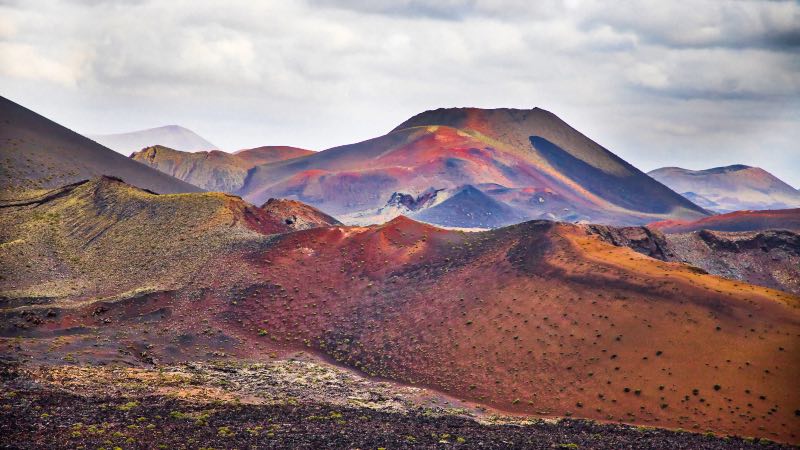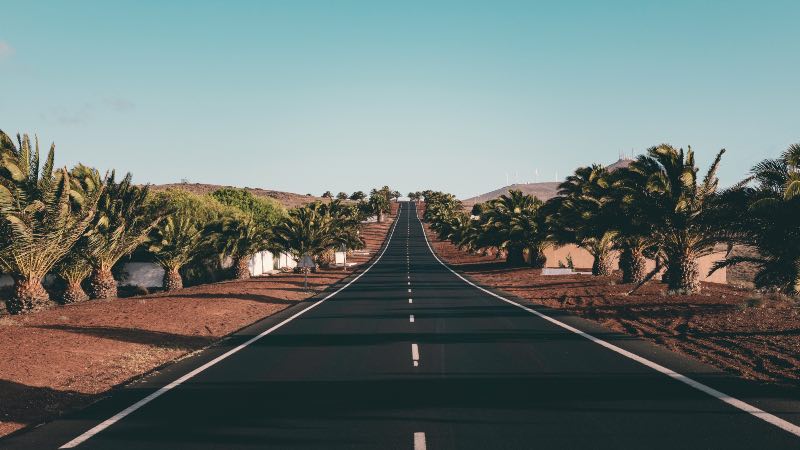Lively tourist resorts are two a penny around the sunny spots of Europe. Lanzarote is one of them, but don’t just expect sandy beaches and lively tourist resorts when you visit here. Oh no. This Canary Island is on a different level altogether.
Look out the aeroplane window and you’ll feel like you’re arriving on the moon! Welcome to the volcanic tourism-themed island.
Lanzarote has been welcoming sun-seeking tourists for many a decade and continues to be one of the Canary Islands chains’ most visited destinations. Look past the whitewashed houses and welcoming, bustling resorts and there’s a dense volcanic landscape piercing the landscape. Lava fields of black and red contrast with the deep blue sea and the little sleepy villages. It’s quite the scene.
Enjoy those sandy beaches, and the all-inclusive resorts, but head out and explore the island, for you’ll discover there are many treasures in both the north and south of the island. Let’s look at the best things to do in Lanzarote. Starting in the south and heading north.

Photo by Josep Castells on Unsplash
Southern Region:
Timanfaya National Park
Ready yourself to be dazzled by the national park’s landscape. You’re entering a science fiction world or is it the set of The Mandalorian?
The lunar landscapes are a sight to behold. Created from volcanic eruptions, some as recently as 300 years ago! Make no mistake, head out on a tour of the Timanafaya National Park and you can expect to see rugged landscapes filled with black lava fields, craters and colourful volcanic cones. Look closer as you tour around and you’ll see life does bloom among the rocks, and colours of red, yellow and orange mix with the blacks and greys.
Top tip: Look out for places like Fire Mountain, you’ll soon see why it’s so-called.
La Geria
For a different landscape, you need to head for La Geria. It’s the wine-growing region, where the rugged black landscape allows vines to grow. Visit a vineyard and you’ll discover a fascinating history, as well as, a unique wine-making process. For example, the work, including the planting has to be done by hand because machinery cannot be used. Head there in July to sample the local tipple, which you’ll find is fruity.
El Golfo
From the fruity to the green. El Golfo is a vivid green lagoon set inside a crater. A place that’ll be an Instagram hit. You can also have more natural fun at Los Hervideros. You are by the coast here and it’s where the waves have forced the water to create a labyrinth of caves. There’s no mistaking that visiting Lanzarote is a nature-lovers treat.

Photo by Howard Bouchevereau on Unsplash
The Northern Region:
If the Southern region is all rugged black volcanic imagery, then the North has a softer, greener hue. It makes for quite the contrast. There’s the valley of 1,000 palms, and peppered throughout you’ll find peaceful, quaint villages to pass through and wander around.
The Cactus Garden
As you journey to the northern side of the island, a detour to Cactus Garden is worth considering. The attraction is found in a former quarry, this place was created when artist César Manrique saw the opportunity to turn this site into a terraced site. Over 1400 classified species of cactus are grown here. Add to these spiky plants the windmill, and you have an attraction that’s unusual, yet pretty.
Haria
The town of Haria and the viewpoint at Mirador del Rio give you a glimpse of the Atlantic Ocean. You have a genuine sense that here you are, miles from the nearest land.
Nature at its best
Other natural features of this region include the volcanic rock caves of Jameos del Agua. Among the natural highlights of the area, you’ll find it’s home to species of blind albino crabs! Worth checking out, wouldn’t you say? Jameos del Agua really is quite the place.
Ultimately, Lanzarote is a destination for relaxing on the beach, having fun in the water, and soaking up the Spanish vibes. However, with such a varied and unusual landscape, it would be amiss of you not to explore.
The way the island has integrated tourism and its landscape is to be admired. Wouldn’t it be a shame not to venture away from the resorts and explore this diverse landscape? Welcome to the Moon on Earth!
Have you been to the island? Have you got a suggestion we may have missed? Comment and we’ll make sure to add it in.